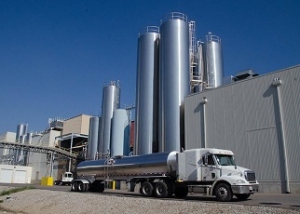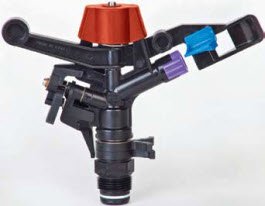News
Behind the Wheel: Milk Haulers Are in Short Supply

This decrease in milk haulers ties into the fact there are 93% fewer farms today compared to 1970.
“Today with dairy farm consolidation, milk haulers still haul the same amount of milk or more,” says Brandon Johnson, president and chief vision officer for Liquid Freight. “The trucking logistics have changed so that today, haulers transport more loads from larger operations and require fewer miles and resources.”
According to a new study issued by global third-party logistics (3PL) services provide Coyote Logistics, LLC, a subsidiary of UPS, and labor market analytics firm Emsi, the makeup of the commercial driver workforce includes:
-
57% being over the age of 45
-
23% over the age of 55
“These days, people have more options for places to work and many blue-collar jobs are in high demand and are competing for workers,” says John Fritzler, director of logistics and plant production planning with Michigan Milk Producers Association. “Warehousing demand has almost doubled, and e-commerce shopping has more than doubled during the pandemic. These two segments have pulled resources away from commercial driving and have resulted in carriers having high turnover and struggling to fill open positions.”
The statistics are alarming. For every nine postings, the trucking industry hires one driver, as opposed to the warehousing industry which fills two out of every three postings. Several reasons hinder hauling companies’ ability to attract younger workers, including:
-
Lifestyle
-
Compensation
-
Regulatory age restrictions (must be 21+).
Attract and Retain Valuable Drivers
Both Johnson and Fritzler say the commercial driving industry and carriers need to explore opportunities to attract and retain valuable team members, including:
-
Increase driver compensation and benefits. According to Johnson, it’s not uncommon for a tanker driver to earn between $60,000 and $90,000 per year depending on whether or not they want to be home every night or choose to be a long-haul driver. Benefits can include quarterly and annual bonuses, better health insurance benefits, including dental, 401K retirement accounts with matching funds by the carrier, increased vacation time, health club memberships and the opportunity for pay increases.
-
A positive company culture where drivers are treated well and valued as both employees and people. “As the food supply chain runs on their efforts, their stature in our society is rising to new levels of professional respect,” Johnson notes.
-
Advocate for lower regulated driving age. Improve diversity and reach out to minorities, women and veterans who may be underrepresented.
-
Follow technology improvements. Including autonomous trucking and other advancements that may attract workers due to reduced stress and boredom.
What Does This Spell for Dairy?
According to Fritzler, greater competition for resources and dairy needing niche drivers due to tanker endorsement and milk samplers’ licenses, rate increases are likely to occur.
"I see that current fuel prices and inflation are driving freight increases for other transportation modes. This, coupled with the niche need for milk haulers, is putting even greater pressure on rates,” Frtizler remarks.
Also, lack of qualified drivers is a real risk to the industry.
“There is potential that carriers hoping to retain drivers by being competitive with similar industries may ask for a change in milking times to reduce driver downtime,” Fritzler shares.
The impact is also felt by plants, according to Monica Ganley, an analyst with the Daily Dairy Report and principal of Quarterra, a consulting firm in Buenos Aires.
“Dairy plant operators are frustrated by a scarcity of labor, and many say that given milk availability and dairy demand, they would happily run their plants harder if they could only hire the needed labor,” she says.
Fortunately for the dairy industry, there are real benefits when haulers and farmers get established. Fritzler notes that studies have found that more experienced drivers (greater than five years) find driving more enjoyable the longer they drive.
“This is very evident in dairy with the number of experienced drivers,” Fritzler says. “Drivers and dairy producers build strong bonds through daily communication and shared respect.”
Johnson concurs with Fritzler, stating that a milk hauler gets to be part of the most important supply chain—food.
One consideration is for companies to explore alternative strategies to attract more drivers for milk hauling companies by:
-
Invest in worker safety and quality of life to stand out for job seekers.
-
Establish a career development program and emphasize opportunities for drivers.
-
Provide on-the-job training to minimize the entry barrier of commercial driver’s license (CDL) and milk samplers’ licensing requirements.
The National Tank Trucker Carriers states the trucking’s driver shortage already exceeds 50,000 drivers, with the shortage impacting other areas, like trained mechanics.
“Ask your drivers what they want to be happy and establish a long career,” Johnson states. “You'll find the answers on how to attract and retain enough drivers to make you a market leader.”





















